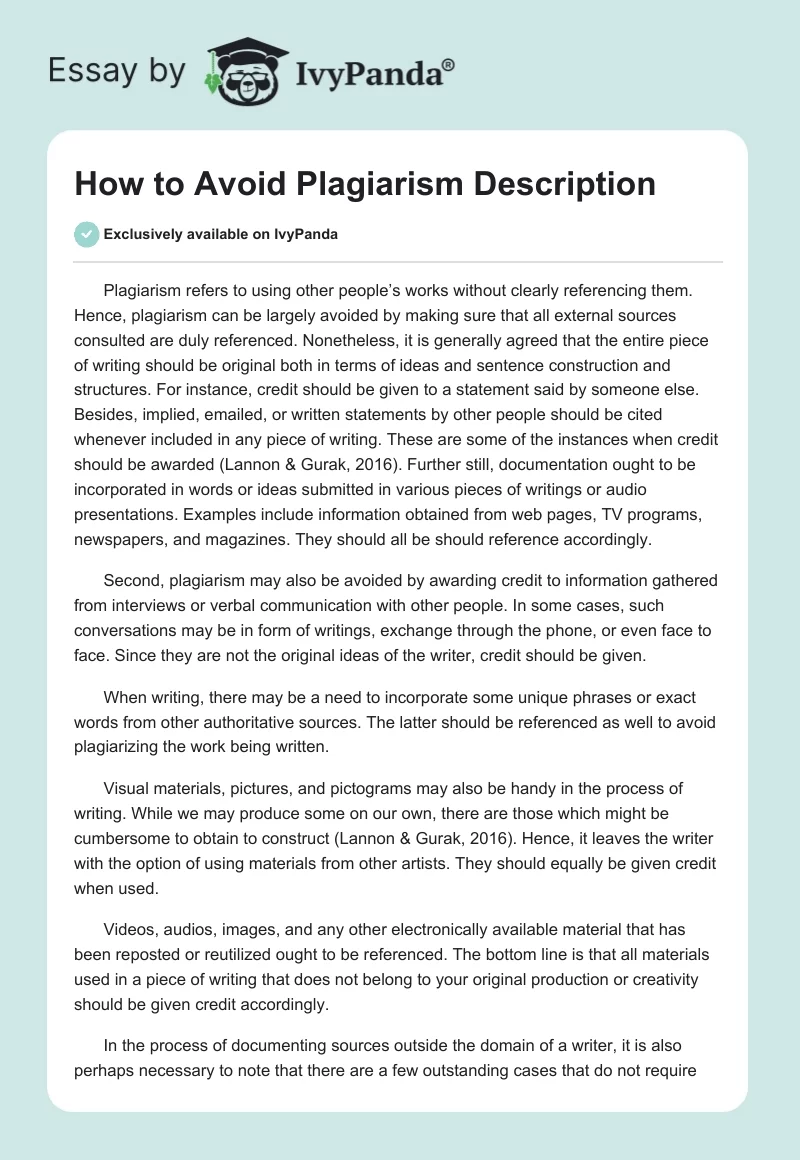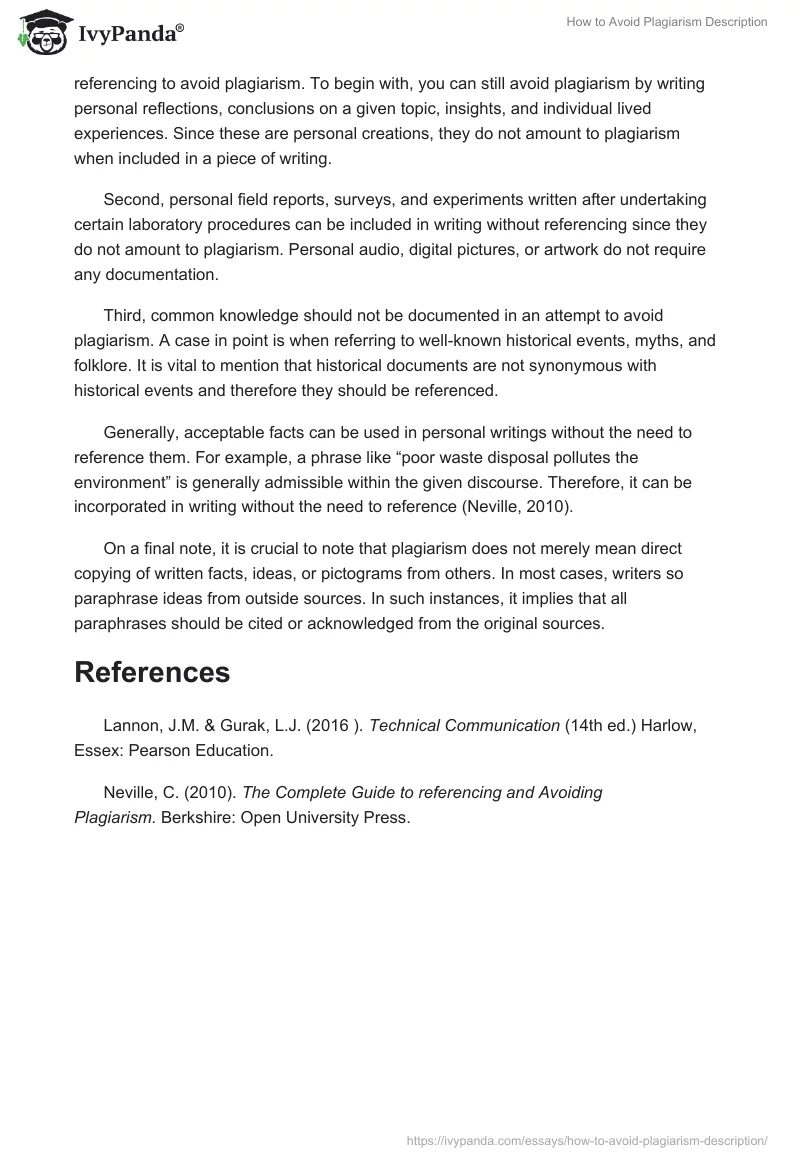Plagiarism refers to using other people’s works without clearly referencing them. Hence, plagiarism can be largely avoided by making sure that all external sources consulted are duly referenced. Nonetheless, it is generally agreed that the entire piece of writing should be original both in terms of ideas and sentence construction and structures. For instance, credit should be given to a statement said by someone else. Besides, implied, emailed, or written statements by other people should be cited whenever included in any piece of writing. These are some of the instances when credit should be awarded (Lannon & Gurak, 2016). Further still, documentation ought to be incorporated in words or ideas submitted in various pieces of writings or audio presentations. Examples include information obtained from web pages, TV programs, newspapers, and magazines. They should all be should reference accordingly.
Second, plagiarism may also be avoided by awarding credit to information gathered from interviews or verbal communication with other people. In some cases, such conversations may be in form of writings, exchange through the phone, or even face to face. Since they are not the original ideas of the writer, credit should be given.
When writing, there may be a need to incorporate some unique phrases or exact words from other authoritative sources. The latter should be referenced as well to avoid plagiarizing the work being written.
Visual materials, pictures, and pictograms may also be handy in the process of writing. While we may produce some on our own, there are those which might be cumbersome to obtain to construct (Lannon & Gurak, 2016). Hence, it leaves the writer with the option of using materials from other artists. They should equally be given credit when used.
Videos, audios, images, and any other electronically available material that has been reposted or reutilized ought to be referenced. The bottom line is that all materials used in a piece of writing that does not belong to your original production or creativity should be given credit accordingly.
In the process of documenting sources outside the domain of a writer, it is also perhaps necessary to note that there are a few outstanding cases that do not require referencing to avoid plagiarism. To begin with, you can still avoid plagiarism by writing personal reflections, conclusions on a given topic, insights, and individual lived experiences. Since these are personal creations, they do not amount to plagiarism when included in a piece of writing.
Second, personal field reports, surveys, and experiments written after undertaking certain laboratory procedures can be included in writing without referencing since they do not amount to plagiarism. Personal audio, digital pictures, or artwork do not require any documentation.
Third, common knowledge should not be documented in an attempt to avoid plagiarism. A case in point is when referring to well-known historical events, myths, and folklore. It is vital to mention that historical documents are not synonymous with historical events and therefore they should be referenced.
Generally, acceptable facts can be used in personal writings without the need to reference them. For example, a phrase like “poor waste disposal pollutes the environment” is generally admissible within the given discourse. Therefore, it can be incorporated in writing without the need to reference (Neville, 2010).
On a final note, it is crucial to note that plagiarism does not merely mean direct copying of written facts, ideas, or pictograms from others. In most cases, writers so paraphrase ideas from outside sources. In such instances, it implies that all paraphrases should be cited or acknowledged from the original sources.
References
Lannon, J.M. & Gurak, L.J. (2016 ). Technical Communication (14th ed.) Harlow, Essex: Pearson Education.
Neville, C. (2010). The Complete Guide to referencing and Avoiding Plagiarism. Berkshire: Open University Press.


